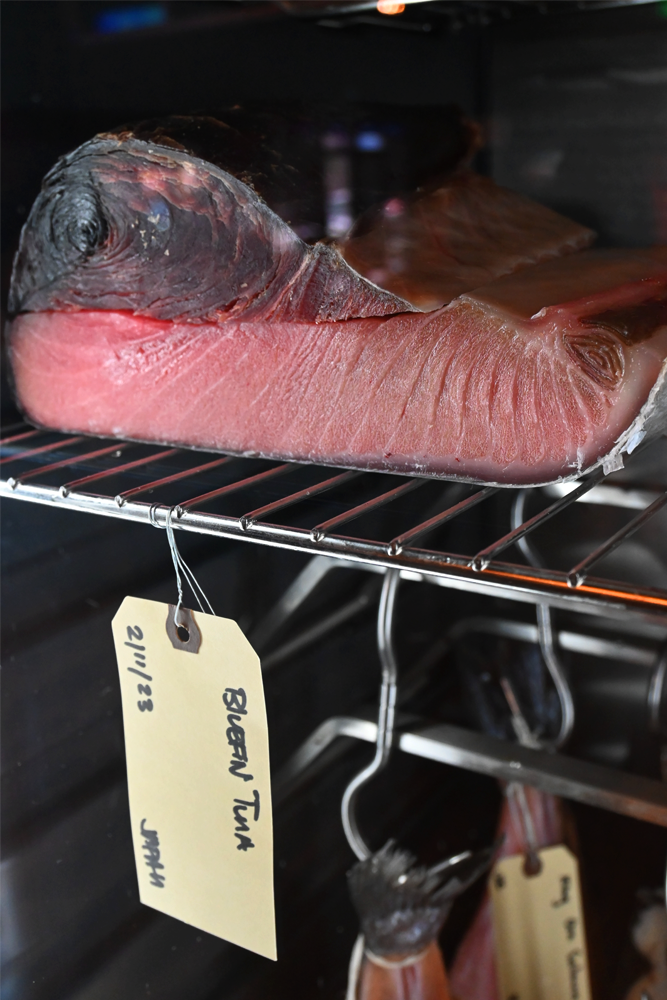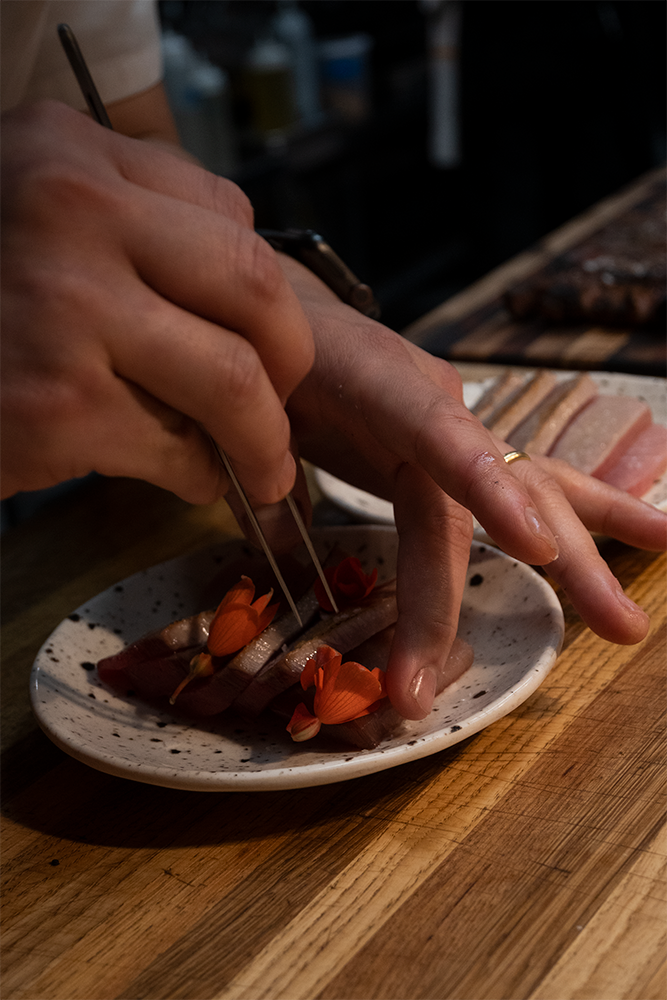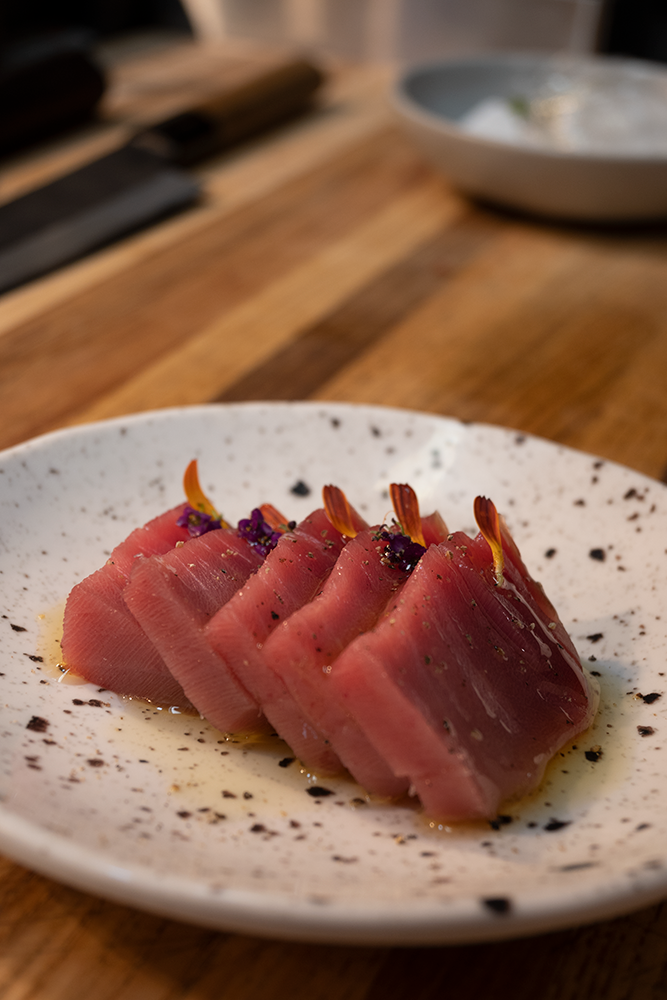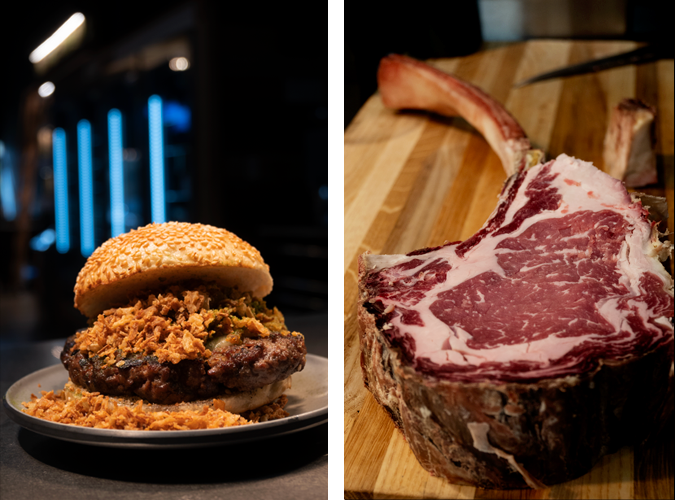Take a look at our
DRY-AGE PROGRAM
Since introducing our Dry Aging program, we have showcased a wide range of proteins, including everything from beef, pork, duck and even squab. Currently, beef and imported fish from Japan have been the main focus for our Butcher Board menu. Chef Janny and the FoodWorks team put a lot of care and love into developing these top-tier proteins, from the initial butchering, to the aging process, and finally, carefully preparing them for you each time you order a Butcher Board.
From japan, to our kitchen, to your plate



The process for aging begins with fabricating the proteins, which are then placed in our state-of-the-art Dry Ager units, made in Germany. Being exposed to a temperature controlled open-air environment where the humidity can be regulated, allows for a beautifully conditioned product. Dry aged beef tends to be rich and tender with notes of blue cheese and umami while fish is nutty, supple, and oceanic; opposite of fishiness. Our proteins are aged anywhere from 7 to 40 days.
This is your sign to get a dry age butcher board
We have 2-3 different beef selections, and anywhere from 3-6 different fish selections to choose from. Visit FoodWorks for all of our current offerings on rotation. Proteins are priced individually based on the item and all selections are subject to change based on availability.
What will you be trying next time you visit FoodWorks?

dry aging Q&A
Dry Ager UX1500 Pro.
Dry-aging beef dates back thousands of years, one of the oldest methods for tenderizing and flavoring meat. The process was known back then as ‘hanging” because it involved hanging the meat.
Yes. The goal is to identify the “sweet spot” in tenderness and flavor. Older is not always better.
Dry-aging has additional benefits when the natural enzymes act on the meat during the aging process, which makes the beef more tender, and easier to digest.
